Born on 7 June 1791, Fülöp Haas founded his carpet company in 1810 as a descendant of the old weaver family, with a sixty-forint scholarship from the drawing school in Vienna. Shortly, Haas produced better quality goods than English products by studying their methods and improving manufacturing processes. He also outperformed the products of the English carpet and upholstery industry at two exhibitions in Vienna and then one in Leipzig, mainly with oriental-patterned rugs. He already had several factories in Austria and the Czech Republic at the time, where upholstery fabrics, damasks and plush were produced.
In the 1840s, the Haas company already had a warehouse in Pest, Nagyhíd Street (today's Deák Ferenc Street in the 5th District). In 1864, a crested carpet was made by order of the ruler, Franz Joseph. The company's rapid development is well illustrated by the fact that additional factories, warehouses, and branch stores were established in several European countries in a short time.
The company had factories in Aranyosmarót in Upper Hungary (present-day Slovakia) and Sopron and several cities in England and Italy. After a while, the company had more than 14 factories. Their warehouses Central Europe: Vienna, Prague, Graz, Linz, Brno, Innsbruck, Lemberg, Bucharest, and several Italian cities: Rome, Milan, Genoa, Naples, Trieste had stores of their goods, as did New York and the Transylvanian city, Cluj-Napoca.
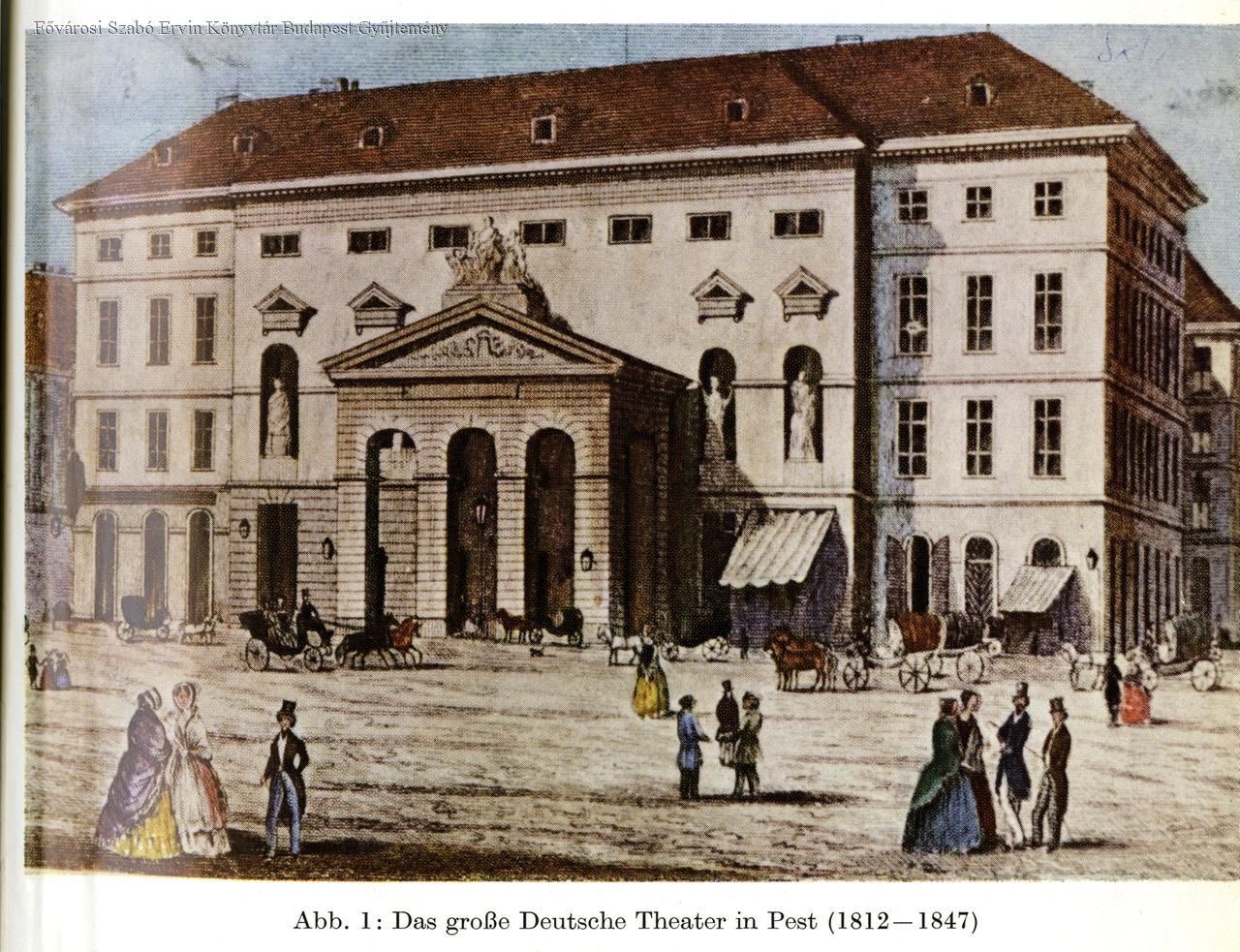
The German Theatre of Pest in a contemporary engraving from the 1840s. Between 1872 and 1874, the company's headquarters, the Haas Palace, was erected on the site of the building that burned down in 1847 on today's Vörösmarty Square (Source: FSZEK Budapest Collection).
Fülöp Haas had an old plan to build a representative palace in Budapest that would house their central warehouse and department store. He had a historicising palace built on the site of the German Theatre of Pest, which burned down in 1847 on Gizella Square (now Vörösmarty Square). He never saw the construction completed: the factory founder died in 1870. The management of the company was taken over by his sons, Ede and Róbert.
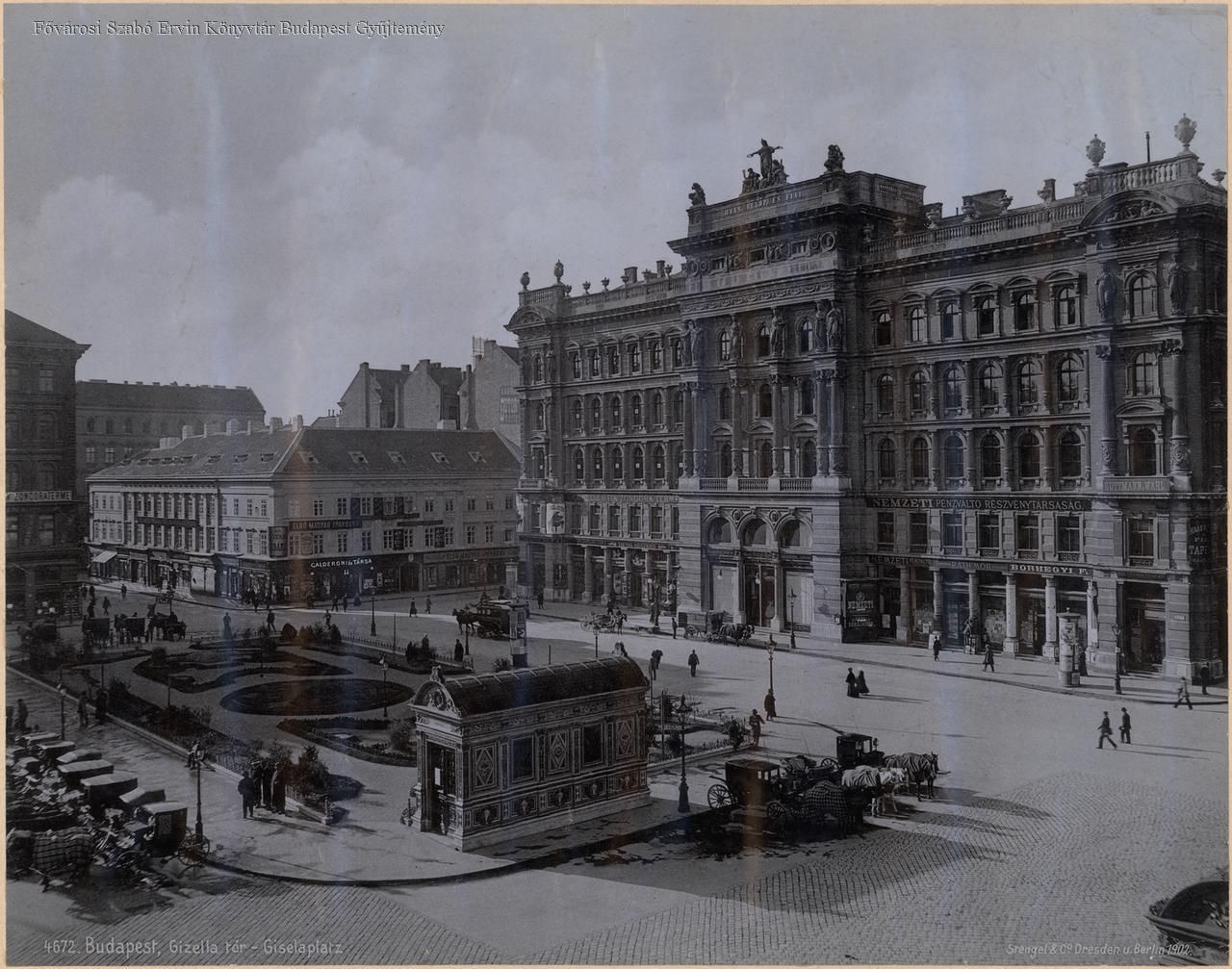
The palace on Gizella Square and the ornate exit halls of the millennium underground can also be seen in the photograph taken around 1902 (Source: FSZEK Budapest Collection)
The five-storey Haas Palace, designed by István Linzbauer, was completed in 1874 in the neighbourhood of the Vigadó in Pest. The large main warehouse and department store were located on the ground floor and first floor. There were flats on the other three levels, later they were rented out by different companies: here were the bank premises of Nemzeti Pénzváltó Rt ('National Exchange Company'), Tordai Cementgyár Rt ('Cement Factory of Torda), Regent Cipőszalon ('Regent Shoe Salon'), but a law firm and notary office, a shipping company and a travel agency, as well as a ticket office for the Millennium Exhibition, were also housed in the building.
Ede and Róbert Haas only managed the company for a few years due to their early deaths. From 1880, Fülöp Haas Jr. took over the company, who transformed it into a public limited company, but three years later, he quit and left the management.
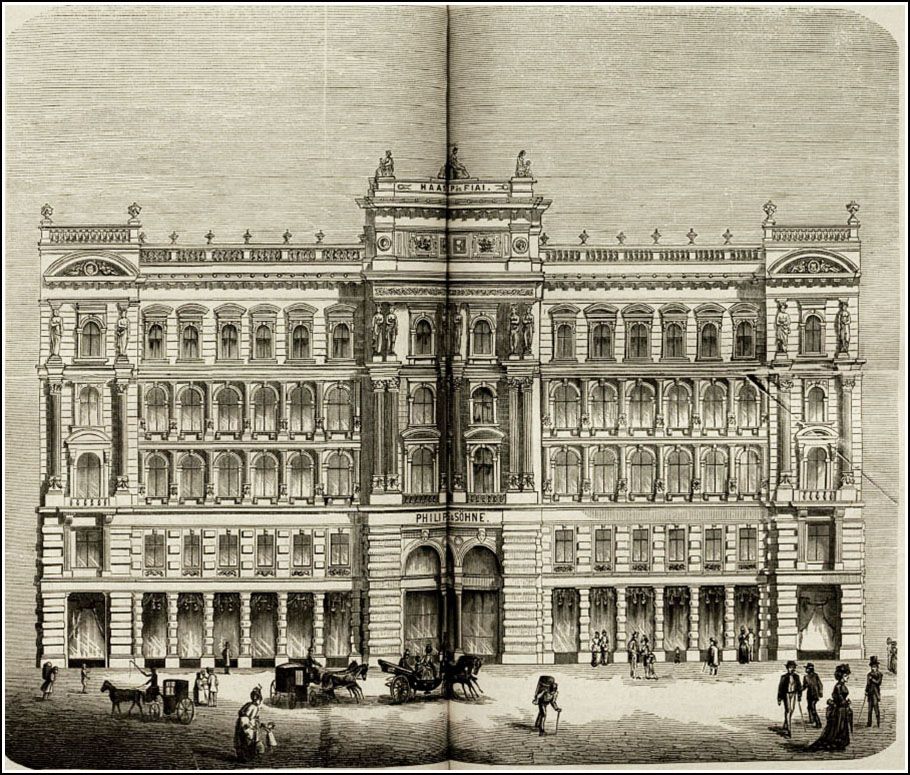
Engraving of the Haas Palace (Source: Vasárnapi Ujság, 29 June 1873)
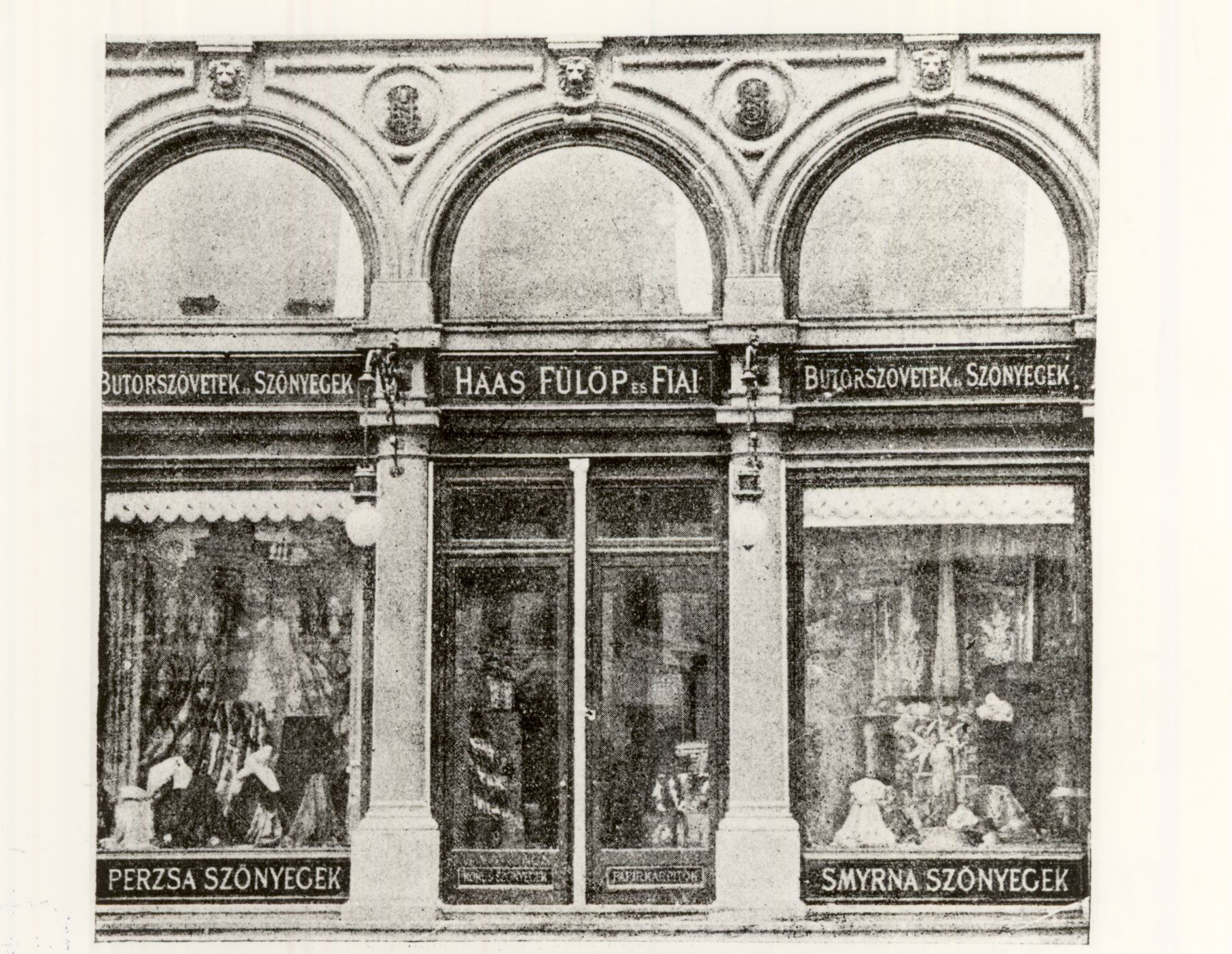
Entrance to the palace of Fülöp Haas (Source: Ország-Világ, 30 November 1902)
Fülöp Haas and Sons PLC, on the other hand, continued to prosper. At the National General Exhibition of 1885, they presented their unique carpets and other woven products in a separate pavilion. Several ornate carpets of representative buildings, erected at the turn of the century, such as the Parliament and the Ministry of Finance, were also manufactured by the Haas company.
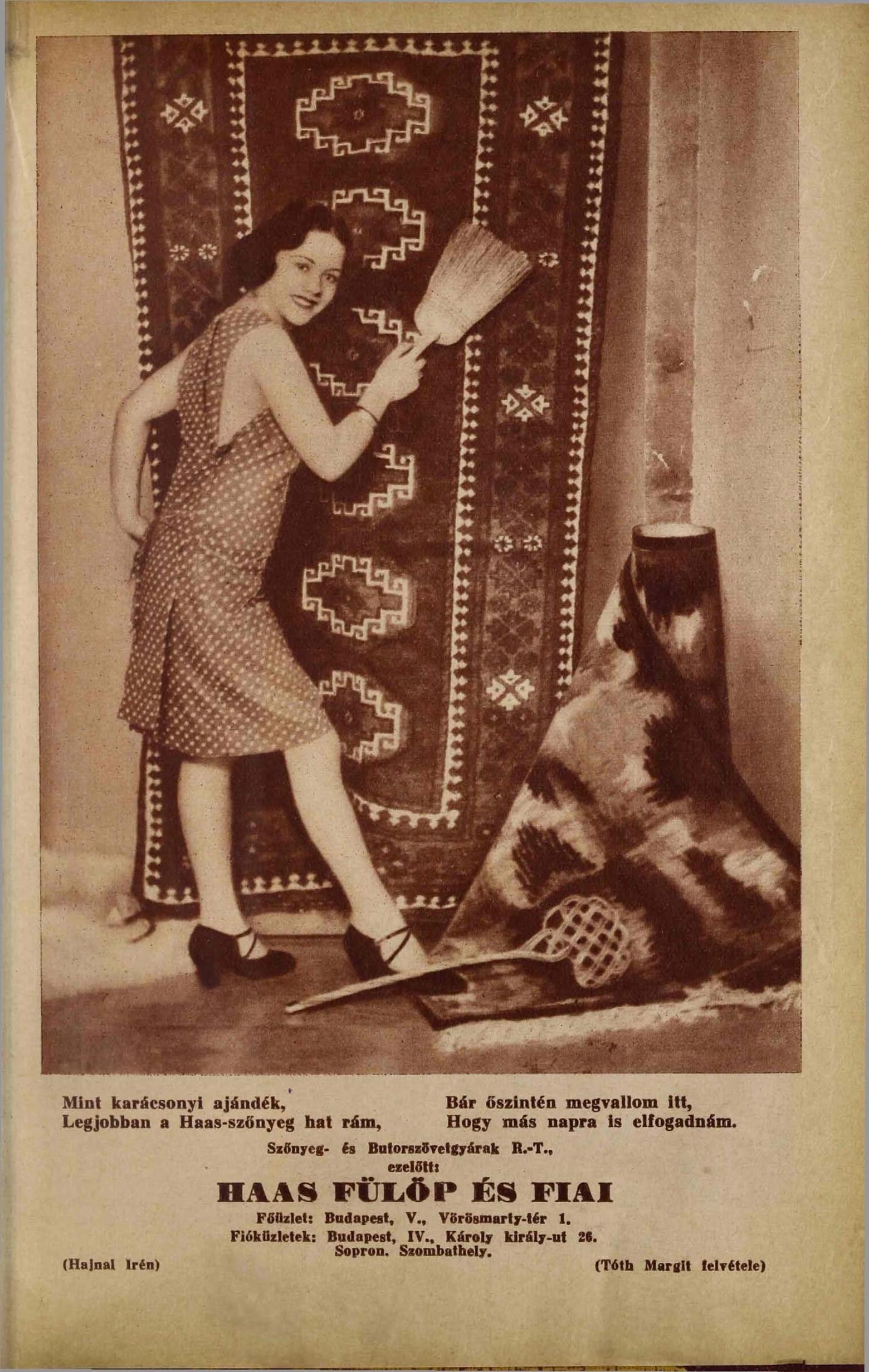
Photo advertisement of the Haas company (Source: Színházi Élet, 1930/52 issue)
The culmination of the company's history can be considered when they were asked to make the golden brocade tapestries of one of the ceremonial halls of the Royal Palace of Buda Castle, the Saint Stephen Hall, which was being built and renewed under the direction of Alajos Hauszmann. The dark blue, gold-woven silk brocade tapestry with the Holy Crown motif was made in the company's factory in Aranyosmarót, where workers from Milan were brought in specially for this work.
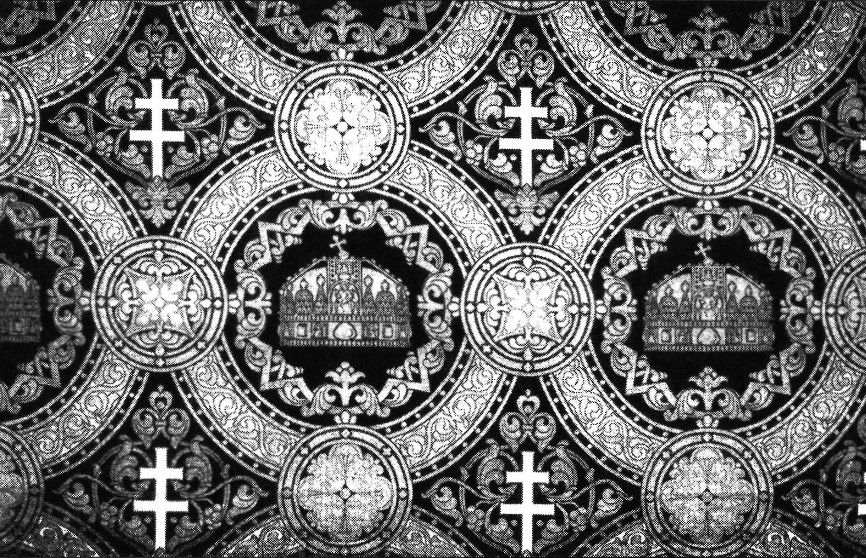
Detail of the artistic tapestry of the Saint Stephen Hall in a contemporary photograph (Source: Hungaricana)
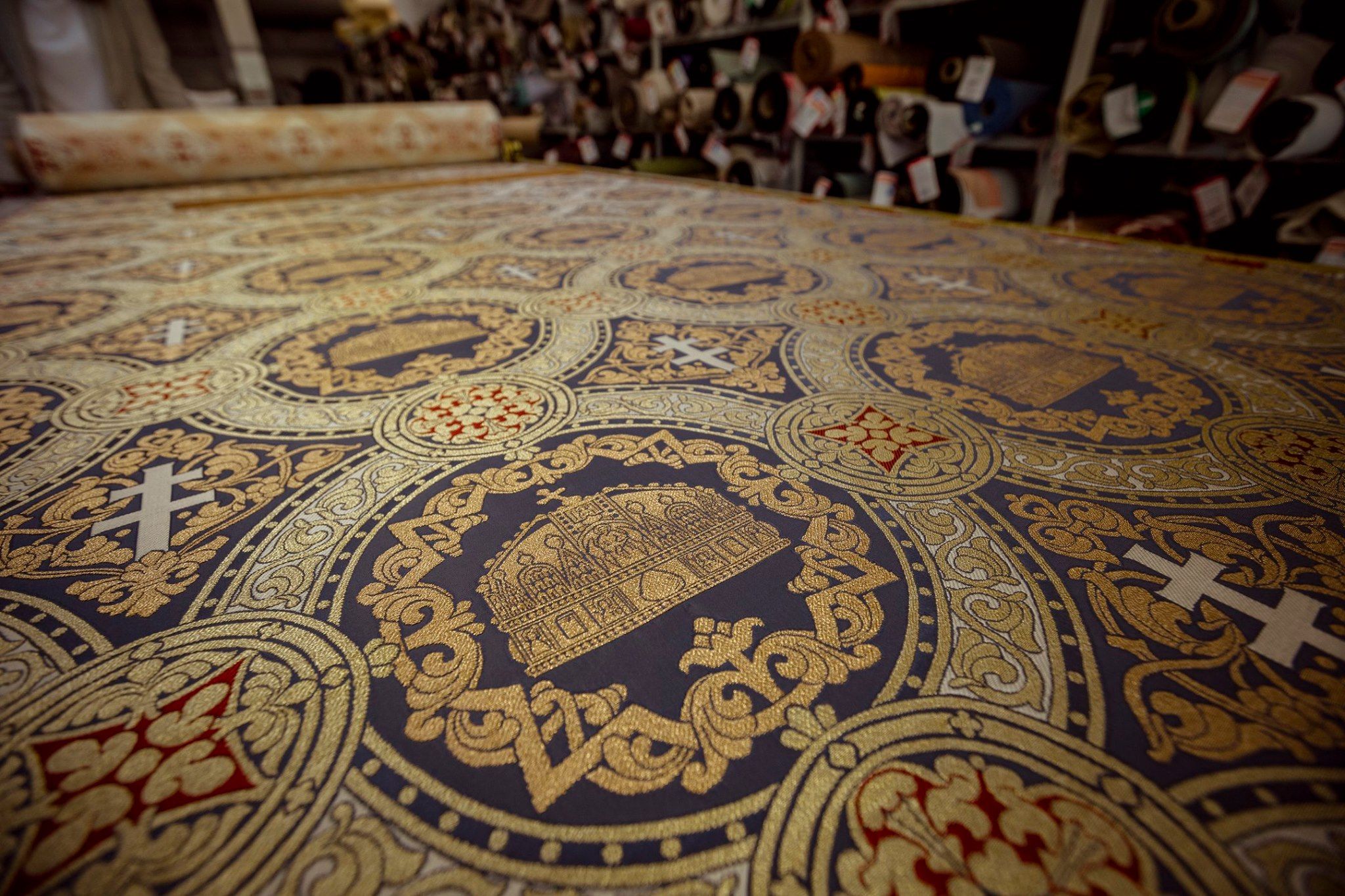
Wall tapestry of the renewed Saint Stephen Hall (Source: National Hauszmann Program)
The Haas Palace was bought by Oszkár Zerkovitz, a wine wholesaler, in 1918. In 1920, the company was given a new name: it continued to operate under the name Carpet and Upholstery Fabric Factory. At that time, the Haas family was no longer involved in the management of the public limited company. In 1942, their two Hungarian factories employed 3,000 workers and had 15 branches.
World War II destroyed the world-famous Haas company, and its downtown palace was bombed and burned. Although many believed that the Haas Palace could have been saved, the dilapidated building was demolished in 1959 after 14 years.
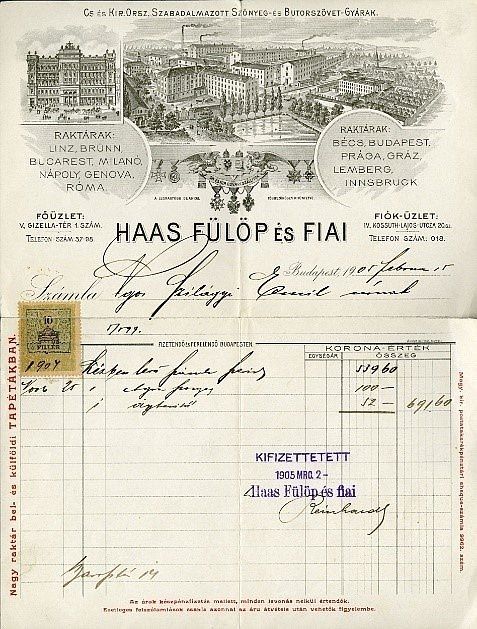
The company's ornate invoice (Source: FSZEK Budapest Collection)
In the 1960s, there was a parking lot on the huge site, then in 1971, the House of Hungarian Music was built, which, as a ten-storey, modern office building, was completely foreign to its architectural environment. Among other things, the National Organizing Office (ORI - Országos Rendező Iroda), the governing body of pop music life at the time, also operated within its walls. The people of the capital never loved the new building, hence the nickname “Elizélt Palace.” It was finally demolished in 2005 and replaced by an office building with a glass and steel facade.
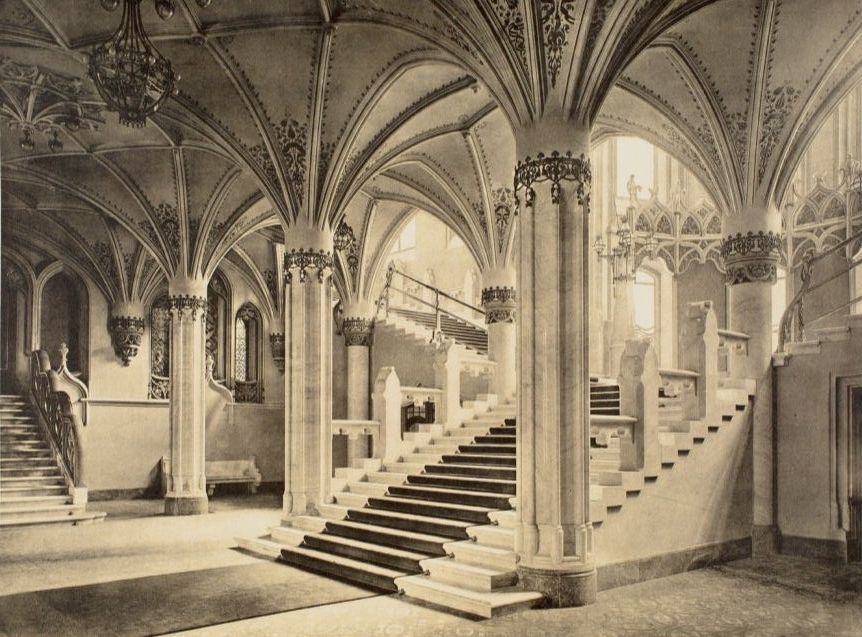
The decorative stairs of the Ministry of Finance in Holy Trinity Square were also decorated with the carpet of the Haas company (Source: Sándor Fellner: Palace of the Royal Hungarian Ministry of Finance, 1908)
Although the palace of Fülöp Haas and sons can only be recalled from photographs today, the public will soon be able to admire their work, or at least an exact copy of it. The beautiful tapestry of the Saint Stephen Hall, which will be completed on 20 August 2021, also commemorates the Haas company.
Cover photo: The Haas Palace in 1897. The historicising building was designed by István Linzbauer (Source: FSZEK Budapest Collection)

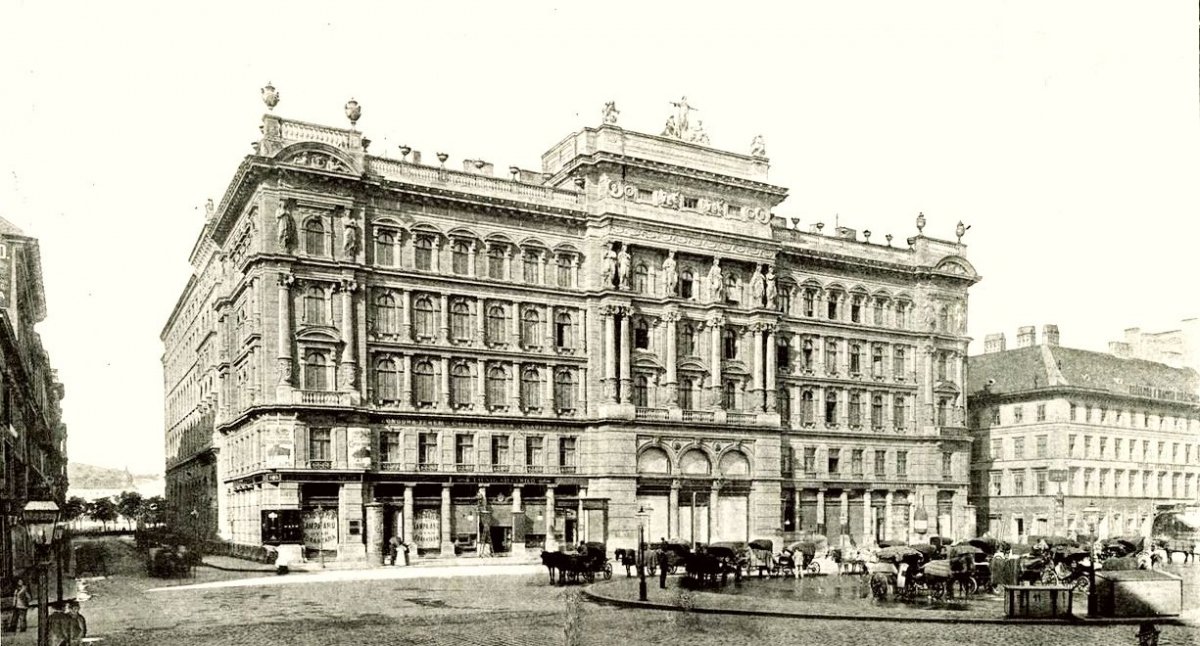



































Hozzászólások
Log in or register to comment!
Login Registration